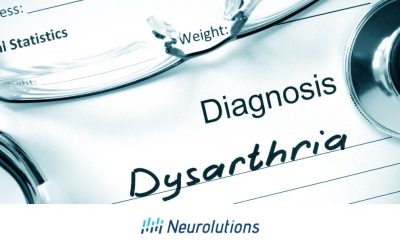Nausea and vomiting can not only occur during a stroke, but it is also common in the aftermath of a stroke. Some strokes damage certain areas of the brain, which can cause an increase of nausea and vomiting behavior. It is important to understand the post-stroke symptoms that you’re experiencing. Persistent vomiting after a stroke should be treated like a medical emergency (1). If you lose nutrients and fluids on a consistent basis, it can rapidly deteriorate your health and cause dehydration. Dehydration can cause serious problems with your post-stroke recovery. Some may include the increase of fatigue, dry-mouth, muscle tightness, charlie-horses in the legs, headaches, and dizziness.
Post-stroke nausea and vomiting could be a side-effect from medication, indicating another stroke, vertigo due to changes in the brain, and or suggest dehydration. It is important to talk to your doctor if you are experiencing any increase of nausea or vomiting. Your doctor can change your medication, give you resources, and provide you with information to help with your nausea and vomiting.
Causes of Post-Stroke Nausea and Vomiting:
There are different causes of post-stroke nausea and vomiting. Some causes include (1, 3):
Damage To The Brain
- Certain strokes, such as cerebellar strokes, can cause disruption to the vestibular system, which causes nausea, vomiting, poor balance, dizziness, and impaired gait.
Changes In Brain Chemicals And Hormones
- After experiencing a stroke, your brain chemicals and hormones are disrupted due to miscommunication between the brain and gut. Also, a fluctuation of hormones can cause an increase in nausea.
Medications Used To Treat Stroke
- Side effects of the medication used for post-stroke symptoms can cause an increase of nausea and vomiting, especially on an empty stomach.
Cyclic Vomiting Syndrome:
- Cyclic vomiting syndrome is characterized by recurrent episodes of vomiting separated by regular symptom-free periods. A dysfunction in the gut-brain connection may cause this occurrence. For more information, watch https://www.youtube.com/watch?v=ILgCFw9cW8E (4)
Vestibular Disorders:
- When the vestibular system is impacted by a stroke, it can cause poor balance, impaired gait, nausea, and vomiting.
Visual or oculomotor dysfunction:
- Changes in vision following a stroke such a decreased vision alignment, blurred vision and double vision can also make some survivors feel nauseous
The Onset of Another Stroke :
- While not exceptionally common, continuous vomiting can be considered a warning sign of a stroke.
Symptoms of Post-Stroke Nausea and Vomiting
A list of common symptoms of post-stroke nausea and vomiting include:
- Nausea
- Vomiting
- Headaches
- Stomach aches
- Loss of appetite
- Lightheadedness
- Dizziness
- Fatigue
- Dehydration
- Weight loss
Diagnosis of Post-Stroke Nausea and Vomiting:
There are different assessments that your medical doctor will perform to diagnose post-stroke nausea and vomiting. Some assessments may include:
- Physical examination to examine the likelihood of dehydration and other symptoms that are urgent to treat
- Medical history review to evaluate the medications you are taking and your lifestyle
- Labs and blood tests, which may include taking blood sugar levels, serum glucose, and hemoglobin analyses
- Imaging tests, including Magnetic Resonance Imaging (MRI)
Categories of Stroke that Experiencing Post-Stroke Vomiting (6)
Types of StrokePercent of Cases with Vomiting:
- Cerebral infarctions – 8.7%
- Cerebral Hemorrhages – 23.7%
- Subarachnoid Hemorrhages – 36.8%
Treatment of Post-Stroke Nausea and Vomiting
There are some medications that your medical doctor might prescribe you to help relieve nausea and vomiting. Talk to your doctor if you are experiencing excessive vomiting and feeling nausea daily. The medication may include antiemetics, which are medications aimed at preventing and treating nausea and vomiting. Other medications can include Zofran, Metoclopramide, and Prochlorperazine (5).
In addition, changes to your diet may help symptoms subside or abolish. Eating less acidic foods may help. Focusing on a healthy diet with whole foods and nutrients rather than foods high in saturated fats or fast food is very important. Intravenous fluids and electrolyte replacement can also help with dehydration and excessive vomiting. Some electrolyte replacement options include Pedialyte, coconut water, and electrolyte tablets.
Depending on the type of stroke and the damage it may have on the brain, vestibular rehabilitation can be of benefit. Nausea and vomiting are accompanied by issues with balance, which could be related to dysfunction of the vestibular system. Vestibular rehabilitation exercises are designed to help retrain the brain and body to regulate your sense of equilibrium. This can help reduce the feeling of nausea and vomiting after a stroke.
Lastly, research suggests tricyclic antidepressants may help with vomiting after stroke due to the impact on the gut-brain connection. These medications can help with cyclic vomiting syndrome, which can happen after experiencing a stroke. The gut and brain are in constant communication with one another, so antidepressants may help alleviate the disruption of this connection (1). Speak to your physician to determine if this is an option to help your symptoms.
Prevention of Post-Stroke Nausea and Vomiting
Whilst post-stroke nausea and vomiting are not entirely preventable, there are multiple precautions you can take to reduce the feeling of nausea and vomiting. Medication management can help with the prevention of nausea and vomiting. Discuss the side effects you are experiencing when you are taking medication with your doctor. Your physician may be able to can prescribe you other medications to relieve the symptoms.
It is essential to keep up with adequate hydration. Specific foods that hold hydration include watermelon, cucumbers, celery, strawberries, zucchini, and other fruits and vegetables. Adding electrolytes into your diet can also increase hydration. Focusing on foods and liquids to help with dehydration can help prevent nausea and vomiting.
Most importantly, controlling underlying medical conditions will help your post-stroke nausea and vomiting. Discuss the signs and symptoms you are experiencing with your medical doctor. If there is an underlying medical condition, your doctor can adjust your treatment plan and provide you with the best stroke recovery plan.
Conclusion
There is hope for recovery when experiencing post-stroke nausea and vomiting. Overcoming nausea and vomiting can be frustrating, and you may have more questions than answers. However, discussing your concerns with your medical team and care, partners, while advocating for yourself will help you on your road to healing and restoring function after a stroke. Vision therapy or vestibular therapy by a trained occupational or physical therapist may be highly beneficial as well
Know your signs and symptoms. If you are experiencing more nausea and vomiting, speak up and tell someone that can help you take steps to get help. It is important to know the early signs in order to help prevent more serious medical problems. There are multiple treatments you can undergo to treat post-stroke nausea and vomiting.
References:
- https://www.flintrehab.com/stop-vomiting-stroke/
- https://karger.com/ced/article-abstract/7/4/220/58800/Nausea-and-Vomiting-in-Acute-Ischemic-Stroke
- https://www.ncbi.nlm.nih.gov/pmc/articles/PMC3309328/
- https://www.youtube.com/watch?v=ILgCFw9cW8E
- https://www.ncbi.nlm.nih.gov/books/NBK532303/
- https://emj.bmj.com/content/30/9/728.abstract





